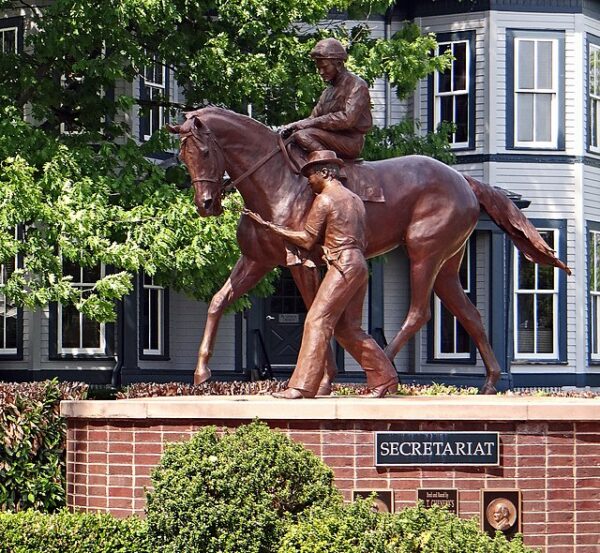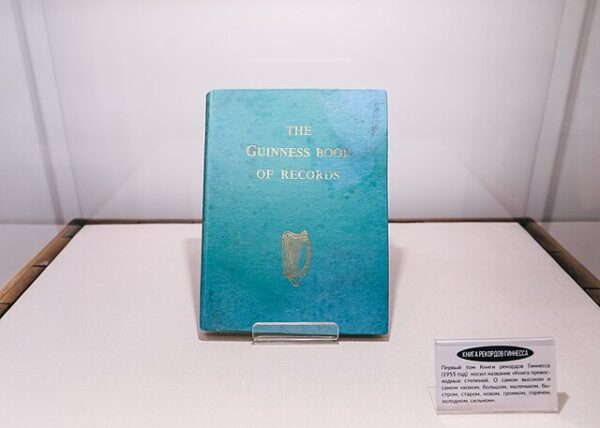On June, 9, 1973, one of America’s most dominant athletes secured himself a place in the pantheon of the greatest of all time. He didn’t play basketball, baseball, or football.
He wasn’t even a human.
Secretariat was an American thoroughbred racehorse who became the ninth winner of the U.S. Triple Crown–the Kentucky Derby, the Preakness Stakes, and the Belmont Stakes. Born in 1970, his short, brilliant 16-month career was marked with 16 wins, three showings in second, and third once. He set a record for raking in the money totaling $1,316,808. He was named Horse of the Year twice during that short time span.
But it was on this day in 1973, when Secretariat truly made his mark as one of the best to ever do it.
The Belmont Stakes described what happened this way: “‘Big Red’ went postward as the 1-10 favorite to become the ninth Triple Crown winner, and the first in 25 years. Challenging him were Sham, who had finished second in both the Derby and the Preakness, and three other mismatched thoroughbreds. When the gates opened, Secretariat and Sham raced together around the first turn through a half-mile in a suicidal: 46 1/5. On the backstretch, with jockey Ron Turcotte sitting still as a stone, the colt gathered momentum with every stride. He ran three-quarters in 1:09 4/5, the mile in 1:34 1/5, and when he hit the quarter-pole in 1:59, faster even than he had won the Derby, the crowd was on its feet, screaming in anticipation.
“Secretariat is alone. He is moving like a tremendous machine!” track announcer Chic Anderson yelled. “He’s 25 lengths in front!” Secretariat was completely alone as he swept across the finish line an astounding 31 lengths in front of Twice a Prince in a world-record 2:24 for the 1 1/2 miles.
Big Red’s 3-year-old campaign started off as more of the same: He swept through the Bay Shore and Gotham Stakes, but then the unthinkable happened: He lost, finishing third in the Wood Memorial to Angle Light. Immediately, questions were raised about his ability to go a mile and a quarter. But when the first Saturday in May rolled around, he was the 3-2 choice to win the Run for the Roses. By the time he arrived back in New York for the Belmont with Derby and Preakness victories in tow, the entire country was anticipating the end of the quarter-century Triple Crown drought.
When Secretariat won the Belmont, he did more than become the first horse since Citation to win the Triple Crown. He turned in the single greatest performance in the history of horse racing. After the Belmont, Secretariat raced nine more times, winning six, coming in second twice and third once. His major losses were to Onion in the Whitney and to Prove Out in the Woodward. Inducted into racing’s Hall of Fame in 1974, Secretariat was also ranked 35th on ESPN’s 100 Greatest Athletes of the Twentieth Century. Suffering from laminitis, he was euthanized in October, 1989, and is buried at Claiborne Farm in Paris, Kentucky.”
Secretariat’s jockey that day, Ron Turcotte, said that he had lost control of the magnificent horse at Belmont. The horse sprinted into history on his own accord, he insisted.
Secretariat would race six more times, winning four and finishing second twice, noted The History Channel. “In November 1973, the ‘horse of the century’ was retired and put to stud at Claiborne Farm in Paris, Kentucky. Among his notable offspring is the 1988 Preakness and Belmont winner, Risen Star. Secretariat was euthanized in 1989 after falling ill. An autopsy showed that his heart was two and a half times larger than that of the average horse, which may have contributed to his extraordinary racing abilities.”





